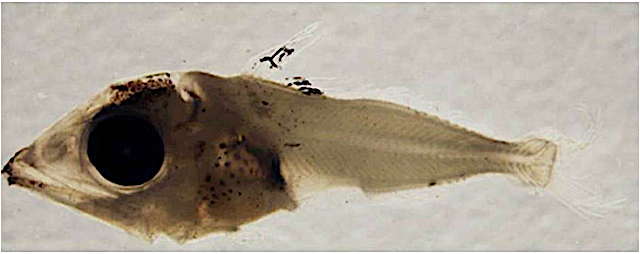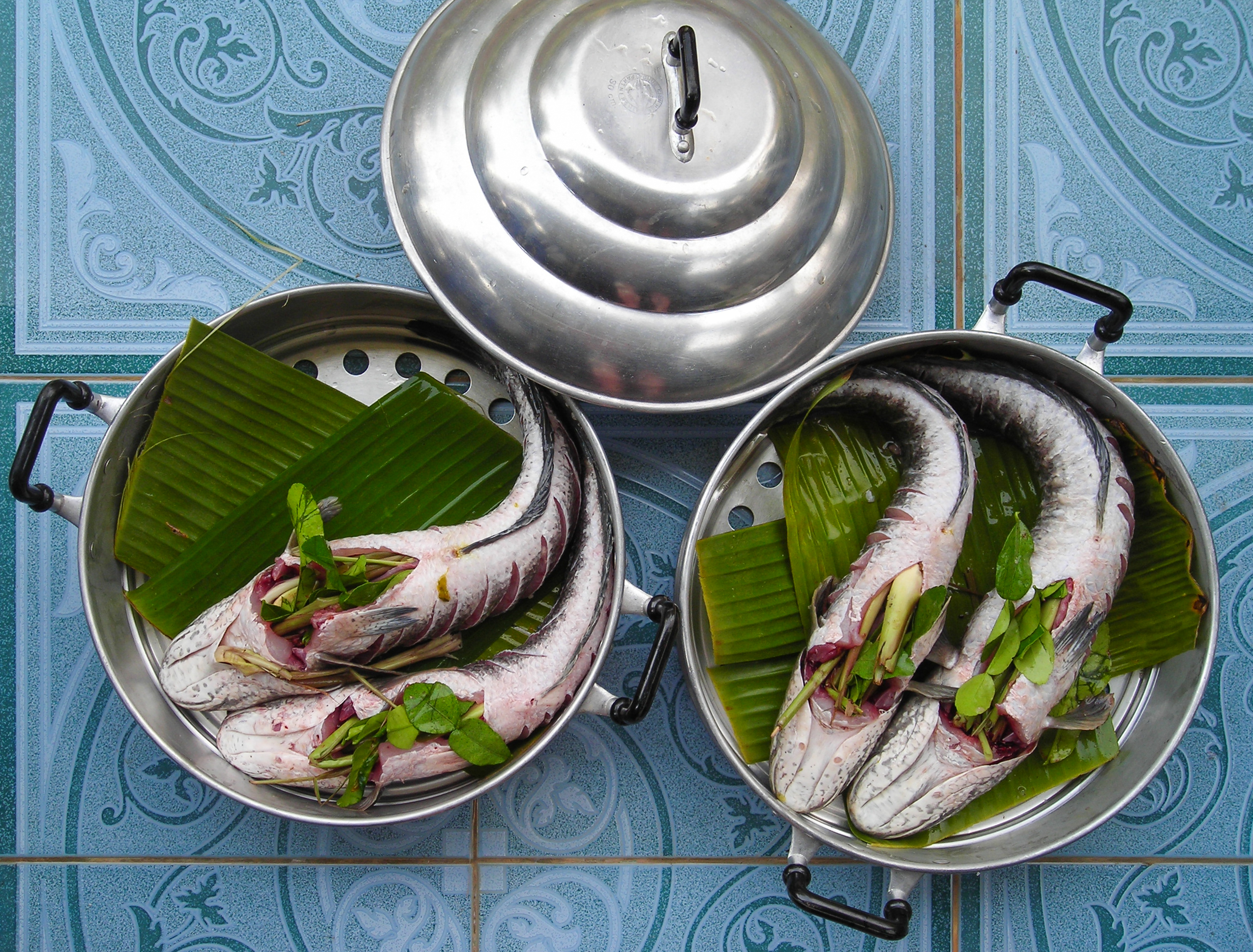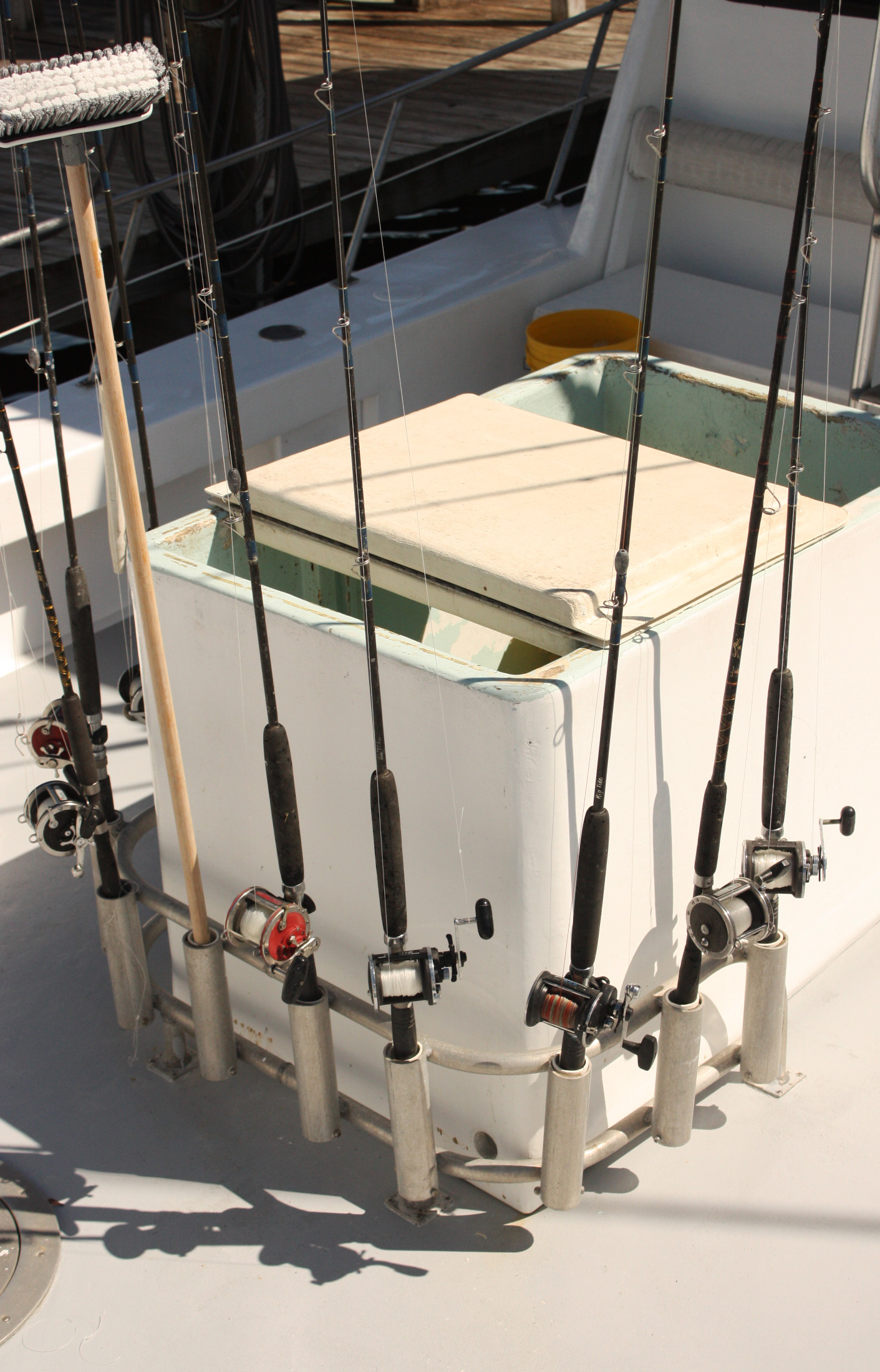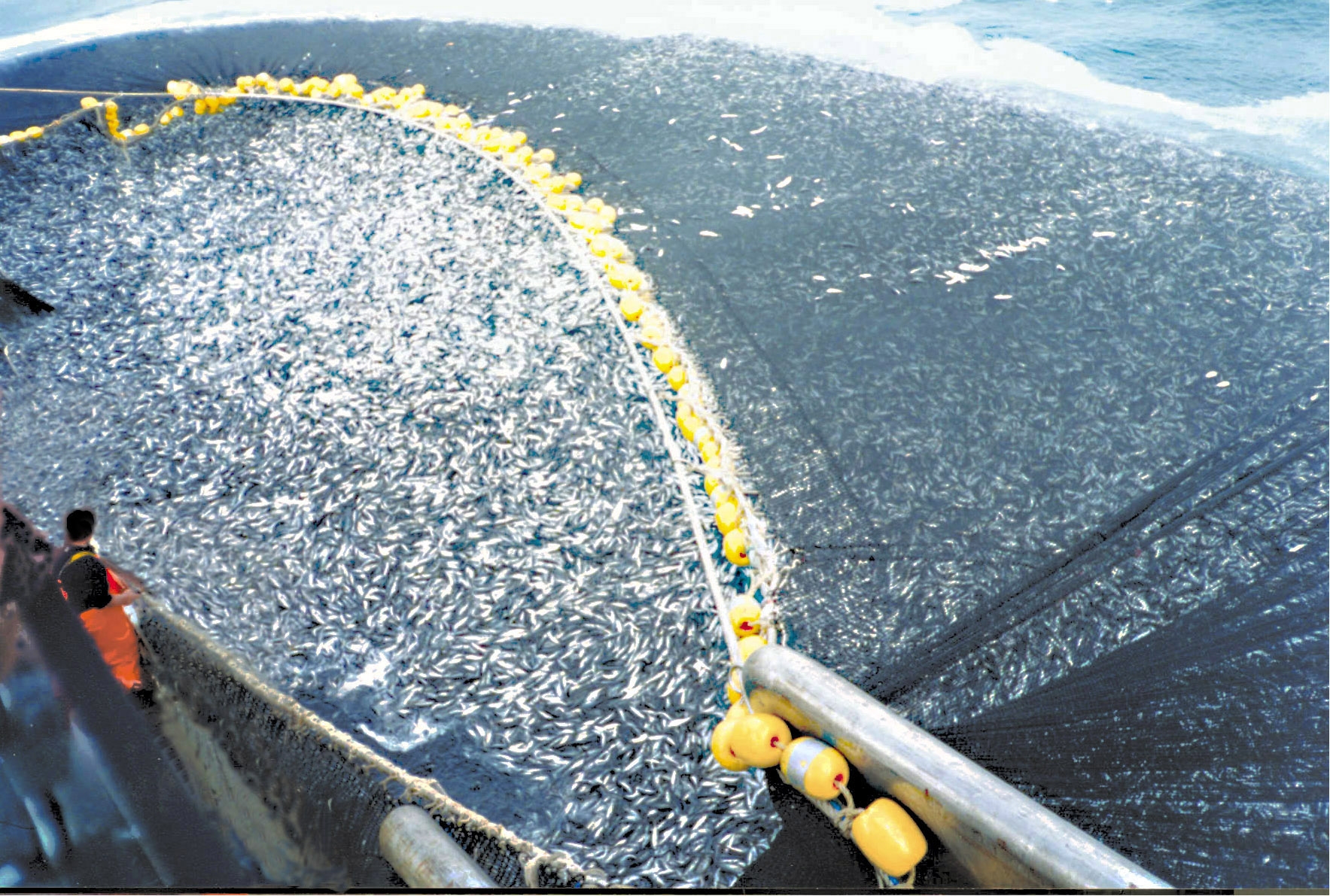|
Atlantic Bluefin Tuna
The Atlantic bluefin tuna (''Thunnus thynnus'') is a species of tuna in the family Scombridae. It is variously known as the northern bluefin tuna (mainly when including Pacific bluefin as a subspecies), giant bluefin tuna (for individuals exceeding ), and formerly as the tunny. Atlantic bluefins are native to both the western and eastern Atlantic Ocean, as well as the Mediterranean Sea. They have become regionally extinct in the Black Sea. The Atlantic bluefin tuna is a close relative of one of the other two bluefin tuna species, the Pacific bluefin tuna. The southern bluefin tuna, on the other hand, is more closely related to other tuna species such as yellowfin tuna and bigeye tuna, and the similarities between the southern and northern species are due to convergent evolution. Atlantic bluefin tuna have been recorded at up to in weight, and rival the black marlin, blue marlin, and swordfish as the largest Perciformes. Throughout recorded history, the Atlantic bluefin tuna ... [...More Info...] [...Related Items...] OR: [Wikipedia] [Google] [Baidu] |
Carl Linnaeus
Carl Linnaeus (23 May 1707 – 10 January 1778), also known after ennoblement in 1761 as Carl von Linné,#Blunt, Blunt (2004), p. 171. was a Swedish biologist and physician who formalised binomial nomenclature, the modern system of naming organisms. He is known as the "father of modern Taxonomy (biology), taxonomy". Many of his writings were in Latin; his name is rendered in Latin as and, after his 1761 ennoblement, as . Linnaeus was the son of a curate and was born in Råshult, in the countryside of Småland, southern Sweden. He received most of his higher education at Uppsala University and began giving lectures in botany there in 1730. He lived abroad between 1735 and 1738, where he studied and also published the first edition of his ' in the Netherlands. He then returned to Sweden where he became professor of medicine and botany at Uppsala. In the 1740s, he was sent on several journeys through Sweden to find and classify plants and animals. In the 1750s and 1760s, he co ... [...More Info...] [...Related Items...] OR: [Wikipedia] [Google] [Baidu] |
Food Fish
Many species of fish are caught by humans and consumed as food in virtually all regions around the world. Their meat has been an important dietary source of protein and other nutrients in the human diet. The English language does not have a special culinary name for food prepared from fish like with other animals (as with '' pig'' vs. ''pork''), or as in other languages (such as Spanish '' pez'' vs. '' pescado''). In culinary and fishery contexts, ''fish'' may include so-called shellfish such as molluscs, crustaceans, and echinoderms; but, more expansively, ''seafood'' covers both fish and other marine life used as food. Since 1961, the average annual increase in global apparent food fish consumption (3.2 percent) has outpaced population growth (1.6 percent) and exceeded the increase in consumption of meat from all terrestrial animals except poultry (4.9 percent), both combined (2.8 percent) and individually (bovine, ovine, porcine, et cetera). In ''per capita'' terms, food f ... [...More Info...] [...Related Items...] OR: [Wikipedia] [Google] [Baidu] |
Fishing Rod
A fishing rod or fishing pole is a long, thin rod used by angling, anglers to fishing, catch fish by manipulating a fishing line, line ending in a fish hook, hook (formerly known as an ''angle'', hence the term "angling"). At its most basic form, a fishing rod is a straight rigid stick/pole with a line fastened to one end (as seen in traditional bamboo rod fishing such as Tenkara fishing); however, modern rods are usually more elastic and generally have the line stored in a fishing reel, reel mounted at the rod handle, which is hand-cranked and controls the line retrieval, as well as numerous line-restricting rings (also known as ''line guides'') that distribute bending stress along the rod and help dampening down/prevent line whipping and entanglement. To better entice fish, fishing bait, baits or fishing lure, lures are dressed onto the hook attached to the line, and a bite indicator (e.g. a fishing float, float) is typically used, some of which (e.g. quiver tip) might be in ... [...More Info...] [...Related Items...] OR: [Wikipedia] [Google] [Baidu] |
Purse Seine
Seine fishing (or seine-haul fishing; ) is a method of fishing that employs a surrounding net, called a seine, that hangs vertically in the water with its bottom edge held down by weights and its top edge buoyed by floats. Seine nets can be deployed from the shore as a beach seine, or from a boat. Boats deploying seine nets are known as seiners. Two main types of seine net are deployed from seiners: ''purse seines'' and ''Danish seines''. A seine differs from a gillnet, in that a seine encloses fish, where a gillnet directly snares fish. Etymology The word ''seine'' has its origins in the Old English ''segne'', which entered the language via Latin ''sagena'', from the original Greek σαγήνη ''sagēnē'' (a drag-net). History Seines have been used widely in the past, including by Stone Age societies. For example, the Māori used large canoes to deploy seine nets which could be over a kilometer long. The nets were woven from green flax, with stone weights and light wood o ... [...More Info...] [...Related Items...] OR: [Wikipedia] [Google] [Baidu] |
Longline Fishing
Longline fishing, or longlining, is a commercial fishing angling technique that uses a long ''main line'' with baited hooks attached at intervals via short branch lines called ''snoods'' or ''gangions''.Method and Apparatus for Long Line and Recreational Bait Fishing Patent application 20080202013. 28 August 2008. A snood is attached to the main line using a clip or swivel, with the hook at the other end. Longlines are classified mainly by where they are placed in the water column. This can be at the surface or at the bottom. Lines can also be set by means of an anchor, or left to drift. Hundreds or even thousands of baited hooks can hang from a single line. This can lead to the death of many differ ... [...More Info...] [...Related Items...] OR: [Wikipedia] [Google] [Baidu] |
IUCN Red List Of Threatened Species
The International Union for Conservation of Nature (IUCN) Red List of Threatened Species, also known as the IUCN Red List or Red Data Book, founded in 1964, is an inventory of the global conservation status and extinction risk of biological species. A series of Regional Red Lists, which assess the risk of extinction to species within a political management unit, are also produced by countries and organizations. The goals of the Red List are to provide scientifically based information on the status of species and subspecies at a global level, to draw attention to the magnitude and importance of threatened biodiversity, to influence national and international policy and decision-making, and to provide information to guide actions to conserve biological diversity. Major species assessors include BirdLife International, the Institute of Zoology (the research division of the Zoological Society of London), the World Conservation Monitoring Centre, and many Specialist Groups within th ... [...More Info...] [...Related Items...] OR: [Wikipedia] [Google] [Baidu] |
Commercial Fishing
Commercial fishing is the activity of catching fish and other seafood for Commerce, commercial Profit (economics), profit, mostly from wild fisheries. It provides a large quantity of food to many countries around the world, but those who practice it as an industry must often pursue fish far into the ocean under adverse conditions. Large-scale commercial fishing is called industrial fishing. The major fishing industries are not only owned by major corporations but by small families as well. In order to adapt to declining fish populations and increased demand, many commercial fishing operations have reduced the sustainability of their harvest by fishing further down the food chain. This raises concern for Fisheries management, fishery managers and researchers, who highlight how further they say that for those reasons, the sustainability of the marine ecosystems could be in danger of collapsing. Commercial fishermen harvest a wide variety of animals. However, a very small number of ... [...More Info...] [...Related Items...] OR: [Wikipedia] [Google] [Baidu] |
CITES
CITES (shorter acronym for the Convention on International Trade in Endangered Species of Wild Fauna and Flora, also known as the Washington Convention) is a multilateral treaty to protect endangered plants and animals from the threats of international trade. It was drafted as a result of a resolution adopted in 1963 at a meeting of members of the International Union for Conservation of Nature (IUCN). The convention was opened for signature in 1973 and CITES entered into force on 1 July 1975. Its aim is to ensure that international trade (import/export) in specimens of animals and plants included under CITES does not threaten the survival of the species in the wild. This is achieved via a system of permits and certificates. CITES affords varying degrees of protection to more than 40,900 species. , the Secretary-General of CITES is Ivonne Higuero. Background CITES is one of the largest and oldest conservation and sustainable use agreements in existence. There are three workin ... [...More Info...] [...Related Items...] OR: [Wikipedia] [Google] [Baidu] |
Monaco
Monaco, officially the Principality of Monaco, is a Sovereign state, sovereign city-state and European microstates, microstate on the French Riviera a few kilometres west of the Regions of Italy, Italian region of Liguria, in Western Europe, on the Mediterranean Sea. It is a Enclave and exclave, semi-enclave bordered by France to the north, east and west. The principality is home to nearly 39,000 residents as of the 2020s, of whom about 9,883 are Monégasque people, Monégasque nationals. It is recognised as one of the wealthiest and most expensive places in the world. The official language of Monaco is French language, French. Monégasque dialect, Monégasque, English language, English and Italian language, Italian are also spoken and understood by many residents. With an area of , Monaco is the List of countries and dependencies by area, second-smallest sovereign state in the world, after Vatican City. Its population of 38,423 in 2024 makes it the List of countries by popula ... [...More Info...] [...Related Items...] OR: [Wikipedia] [Google] [Baidu] |
International Commission For The Conservation Of Atlantic Tunas
The International Commission for the Conservation of Atlantic Tunas (ICCAT) is a tuna regional fishery management organisation, responsible for the management and conservation of tuna and tuna-like species in the Atlantic Ocean and adjacent seas. The organization was established in 1966, at a conference in Rio de Janeiro, Brazil, and operates in English language, English, French language, French and Spanish language, Spanish. The organisation has been strongly criticised by scientists for its repeated failure to conserve the sustainability of the tuna fishery by consistently supporting over-fishing – an internal review branded ICCAT's policies on the eastern Atlantic bluefin tuna fishery a "travesty of fisheries management", and an "international disgrace". Conservation movement, Conservationists often refer to ICCAT as "The International Conspiracy to Catch All Tuna".''BBC news''Last rites for a marine marvel?/ref> However, in recent years the organization seems to be turning ... [...More Info...] [...Related Items...] OR: [Wikipedia] [Google] [Baidu] |
Overfishing
Overfishing is the removal of a species of fish (i.e. fishing) from a body of water at a rate greater than that the species can replenish its population naturally (i.e. the overexploitation of the fishery's existing Fish stocks, fish stock), resulting in the species becoming increasingly underpopulated in that area. Overfishing can occur in water bodies of any sizes, such as ponds, wetlands, rivers, lakes or oceans, and can result in resource depletion, reduced biological growth rates and low biomass (ecology), biomass levels. Sustained overfishing can lead to critical depensation, where the fish population is no longer able to sustain itself. Some forms of overfishing, such as the Threatened sharks, overfishing of sharks, has led to the upset of entire marine ecosystems. Types of overfishing include growth overfishing, recruitment overfishing, and ecosystem overfishing. Overfishing not only causes negative impacts on biodiversity and ecosystem functioning, but also reduces fish pr ... [...More Info...] [...Related Items...] OR: [Wikipedia] [Google] [Baidu] |
Sashimi
is a Japanese cuisine, Japanese delicacy consisting of fresh raw fish or Raw meat, meat sliced into thin pieces and often eaten with soy sauce. Origin The word ''sashimi'' means 'pierced body', i.e., "wikt:刺身, 刺身" = ''sashimi'', where wikt:刺, 刺 wikt:し, し = ''sashi'' (pierced, stuck) and wikt:身, 身 = ''mi'' (body, meat). This word dates from the Muromachi period (1336-1573) and there are multiple theories as to its etymology: The term was possibly coined when the word "wikt:切る, 切る" = ''kiru'' (cut), the culinary step, was considered too inauspicious to be used by anyone other than a samurai. This word may derive from the culinary practice of sticking the fish's tail and fin to the slices for the purpose of identifying the fish being eaten. Another possibility for the name is the traditional method of harvesting. "''Sashimi''-grade" fish is caught by individual handline. As soon as the fish is landed, its brain is pierced with a sharp spike, and it ... [...More Info...] [...Related Items...] OR: [Wikipedia] [Google] [Baidu] |







